
The True Cost of Conversion Optimization Today (with Detailed Compensation Data)
A data-driven comparison of the costs of building an in-house optimization team versus hiring a third-party firm.
If you have even the most basic understanding of sales and marketing, you know that optimizing your website is key to increasing sales and revenue. But you also know that you don’t really have the time or the skills to effectively optimize your site.
And no one would expect you to. You’re hip-deep in day-to-day operations, making sure orders go out on time, customer complaints are resolved, and projects are completed on time. Just like those “important” house projects that remain indefinitely undone, conversion rate optimization takes a back seat to seemingly more urgent tasks.
But, at the end of the day, you know that if you really want to achieve your business goals, you have to address the issue of conversion rate optimization (CRO).
All of which brings you to the critical question: Is it better to build an in-house optimization team or hire a third-party optimization firm?
It comes down to a question of time and money. Given your limited bandwidth and budgetary constraints, which option is best?
To answer that question, we consulted CRO employee compensation data for the top metropolitan areas to help you understand how much it would cost to build an in-house CRO team and determine which option makes the most sense for you.
About the data: The data behind these maps comes from Emsi data. Emsi uses public and private labor market data from more than 90 data sources to power user-friendly tools that help organizations understand employment, economic trends, and training needs for various regions.
Is it better to build an in-house optimization team or hire a third-party optimization firm? Well, let's look at the data. Share on XWhat Are The Requirements and Costs Of Conversion?
In order for a football team to succeed, both players and coaches are needed, each with a specific skill set. In part, you need:
- A quarterback who can throw laser passes
- A running back with the vision to see and dart through holes in the defense
- Fleet-footed, sure-handed wide receivers to snag the lasers thrown by the QB
- Hulking offensive linemen who can form a protective wall
- A group of coaches who can bring everything together
In the same way, effectively implementing CRO is a team effort. One or two marketing generalists may have some success with optimization, but not nearly what a team of specialists can achieve.
Isn’t my one CRO team member good enough?
There are a number of distinct skill sets that make up a robust optimization team. In the optimization industry, we’ve noticed an unfortunate trend toward oversimplifying the scope of conversion rate optimization into a single CRO role. In our experience, while these roles can have some effect, it is impossible for a single specialist to execute the full range of tasks that are necessary for effective CRO. Like the saying goes, “jack of all trades and master of none.”
So what kinds of specialists are needed and what does it cost to build an in-house team of these experts? To answer that, let’s dig into the data.
Important Note: To best interpret this data, make sure that you understand that this data represents:
- Total compensation, including salary, benefits, retirement, bonuses, etc
- Average compensation across all industries
- Average compensation across all experience levels (entry-level to retirement)
Role #1: The Project Manager
The project manager is the coach of sorts, keeping projects moving, coordinating efforts, staying abreast of timelines, and ensuring communication between everyone involved. Without a project manager, it’s almost impossible to keep the CRO team in sync, resulting in wasted time, duplicated efforts, and little momentum.
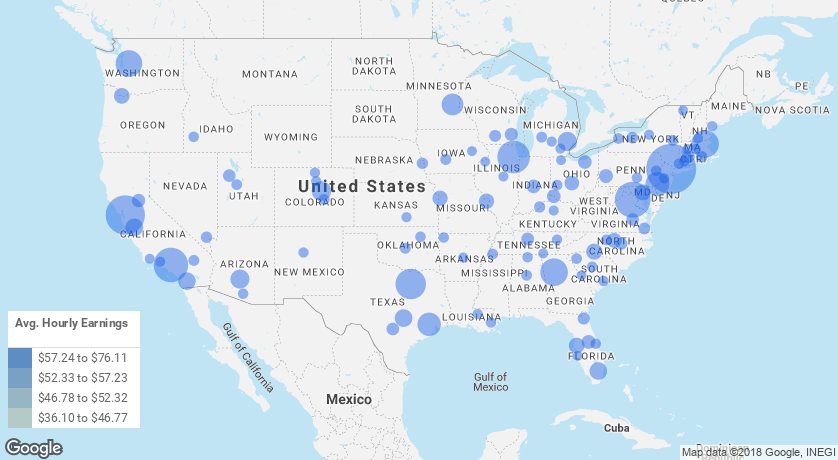
Depending on your location, a project manager can cost:
- HIGH: $143,069/yr
- MEDIAN: $124,408/yr
- LOW: $105,747/yr
Get specific median compensation by top metropolitan areas in our downloadable spreadsheet.
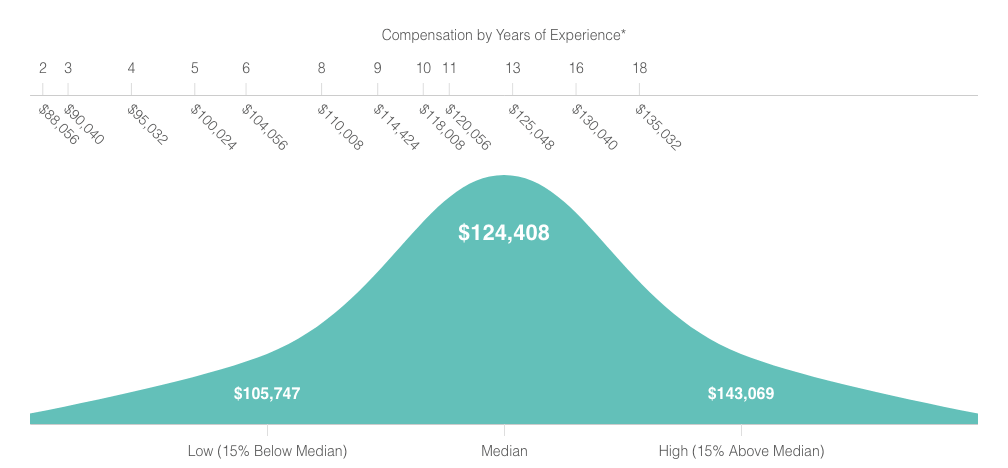
Role #2: The Strategist
The strategist is the one who travels down the mineshaft of your website to mine data, such as website clicks, movements of site visitors, traffic patterns, common site navigation paths, etc. Once the strategist has collected the data, they analyze it for patterns that may reveal optimization issues, and then form testable hypotheses regarding these problems.
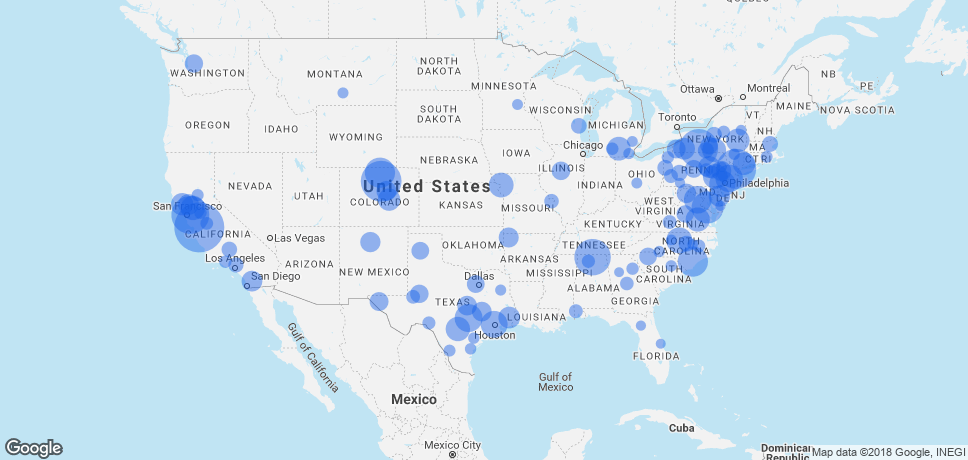
Depending on your location, a strategist can cost:
- HIGH: $153,079/yr
- MEDIUM: $133,112/yr
- LOW: $113,145/yr
Get specific median compensation by top metropolitan areas in our downloadable spreadsheet.
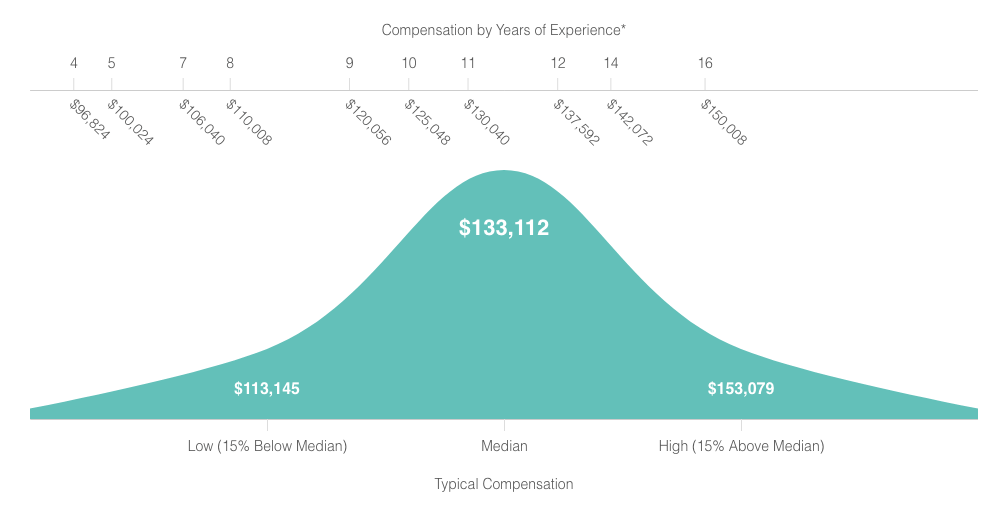
Role #3: The User Experience (UX) Designer
The UX designer is the digital alchemist who transforms hypotheses into reality. Using the results provided by the strategist, they design tests that will both be pleasing to the website user and determine the validity of hypotheses. If A/B tests are designed in a way that ends up frustrating a user, the results will be distorted.
For example, let’s say the strategist and data scientist hypothesize that the navigation menu is confusing to users. Randomly changing the menu has the potential to actually confuse users more and doesn’t actually test the hypothesis. The role of the UX designer is to ensure that the menu is changed in a way that is in line with the hypothesis and doesn’t frustrate the user.
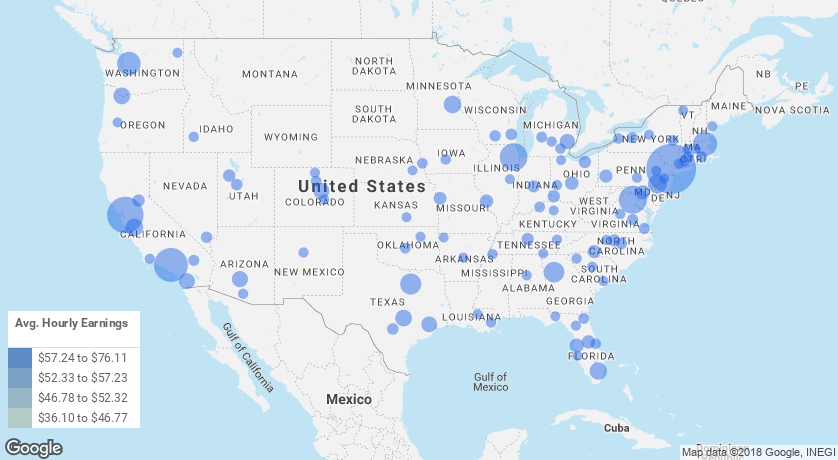
Depending on your location, a UX designer can cost:
- HIGH: $121,946/yr
- MEDIUM: $106,040/yr
- LOW: $90,134/yr
Get specific median compensation by top metropolitan areas in our downloadable spreadsheet.
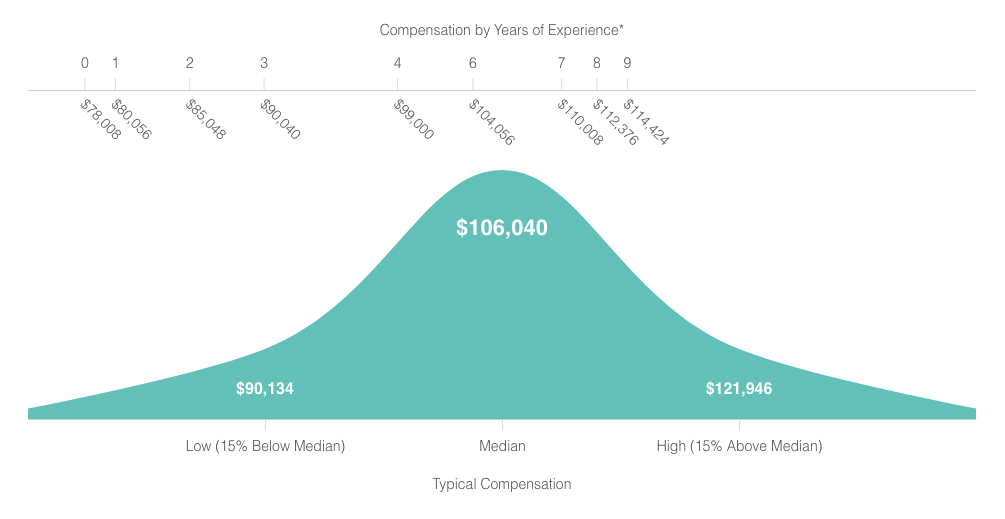
Role #4: The Data Scientist
When testing hypotheses, you shouldn’t simply test A versus B and then go with whichever one gets the best most results. This is where the data scientist comes in.
The data scientist plays a central role in evaluating the results of the tests created by the UX designer and front-end developer. In order to have confidence in the statistical accuracy of the tests and avoid common errors such as false positives, the testing plan must take into account factors such as sample size, projected lift, expected duration, baseline conversion rate, and more.
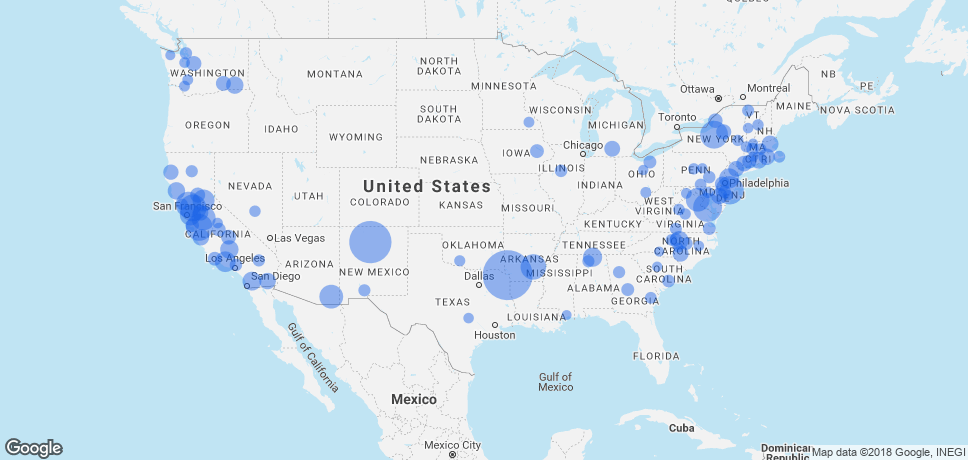
Depending on your location, a data scientist can cost:
- HIGH: $128,864/yr
- MEDIUM: $112,056/yr
- LOW: $95,248/yr
Get specific median compensation by top metropolitan areas in our downloadable spreadsheet.
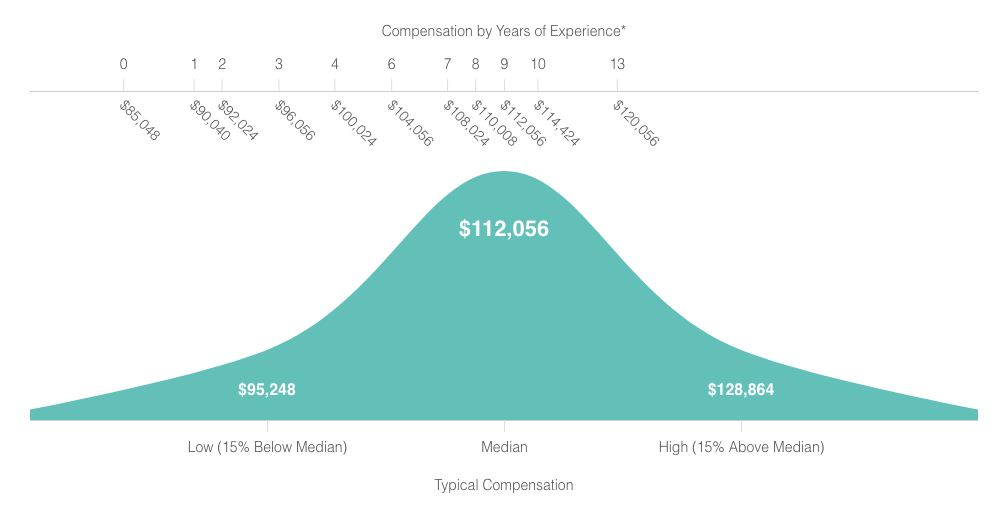
Role #5: The Front-End Developer
The front-end developer is responsible for putting the tests into action on the website itself. They select the A/B testing platform, install the necessary code, and then make modifications to the website when a winner is determined.
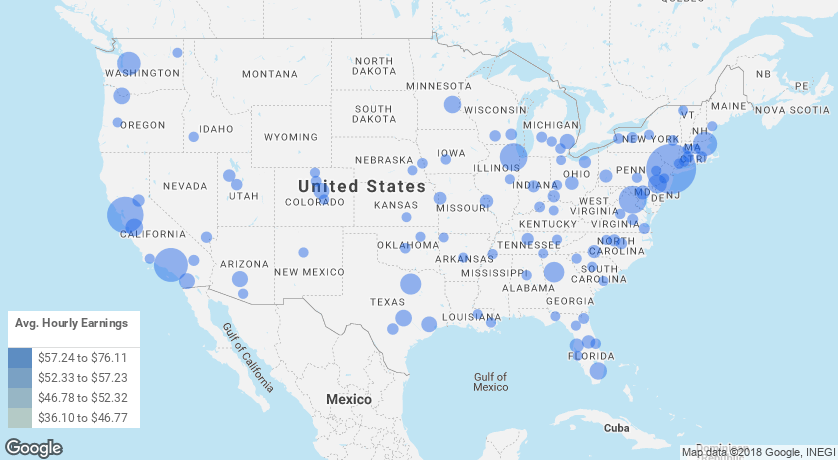
Depending on your location, a front-end developer can cost:
- HIGH: $103,546/yr
- MEDIUM: $90,040/yr
- LOW: $76,534/yr
Get specific median compensation by top metropolitan areas in our downloadable spreadsheet.
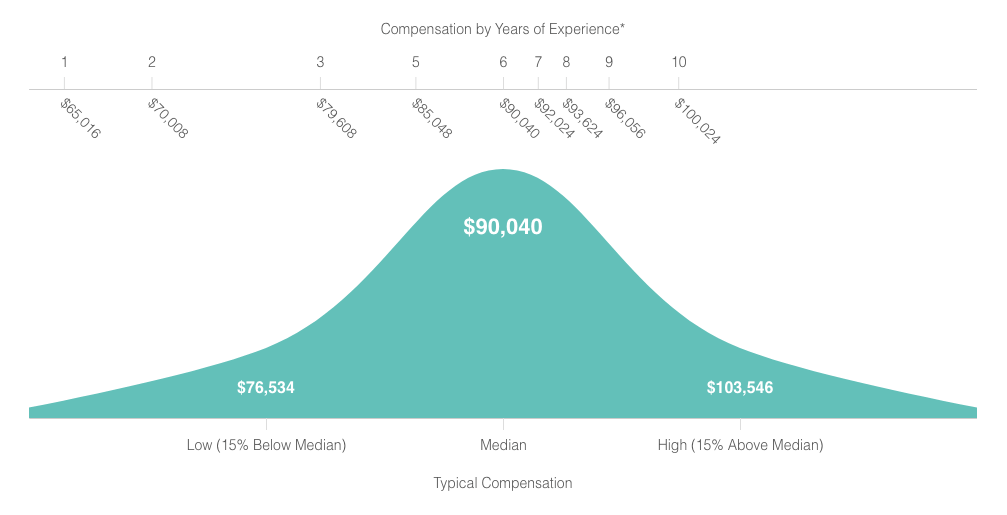
How Many of Each Role Is Needed?
Generally speaking, you should have at least one of each role. With only one of each role on your team, on the low end you’re looking at around $480,808 in total compensation; on the high end, that number climbs to around $650,504. Think about that—half a million dollars a year to run a robust optimization team in-house.
It can cost almost half a million dollars a year to run a robust optimization team in-house. Share on XHowever, if you want to quickly grow your business and optimize your site, you’ll likely need more than one person in each role. It’s been proven numerous times that rapid iteration is the key to quickly improving your optimization rate and dramatically increasing your revenue, so you’ll want to have all hands on deck to move the process forward. The quicker you can create an iterative, incremental growth process, the faster you’ll grow.
For example, Twitter’s incredibly fast growth between 2010 and 2012 was, in large part, due to their rapid iteration. During that period, they amped up their testing from 0.5 tests per week to 10. As Morgan Brown, co-author of Hacking Growth, has said:
“The tests that they were doing wasn’t anything crazy. It’s tests that all of you as optimizers in here would recognize as familiar.
They did many homepage tests. They also did things like fix form validation errors in non-western language countries that led to massive gains. All basic conversion optimization things.
The difference is that at such a scale and without people really noticing it, people turn around and say, ‘Wow, Twitter is growing like crazy. They’re growth hacking.’ Well, no, they just massively increased the velocity of their tests.”
GrowthHackers deployed the same strategy and saw the same results. As CEO Sean Ellis notes:
“We grew from 90,000 MAU [monthly active users] to 152,000 MAU in about eleven weeks without spending a dollar on advertising or increasing the size of our growth team. The only thing that changed was the velocity of our experimentation. We achieved that velocity improvement by adopting the high tempo testing framework to help us prioritize and close the loop on the growth experiments that we thought would move the needle.”
Executing the structured (not random!) CRO process rapidly will lead to quick growth. However, performing more tests in a short amount of time requires more manpower. If you want to rapidly iterate the optimization process, you’ll need more than one person in each CRO role.
Hidden Costs of Building a CRO Team
Unfortunately, the cost of assembling a crack in-house CRO team isn’t simply the sum of all the salaries.
First, there is the general cost of hiring. When taking into account salaries—plus factors like tuition reimbursement, retirement, succession planning, and management responsibilities—the average cost of hiring a new employee is around $4,129.
Second, you will need to train new employees to ensure that everyone on the team is up on the latest CRO techniques and strategies. With the digital marketing and optimization world constantly changing, this training is critical. Furthermore, many new hires lack the digital marketing skills they need to effectively perform their jobs as CRO specialists.
As the Online Marketing Institute notes:
“A 2017 industry report by Training Magazine found that companies in the U.S. spent $90.6 billion on training, a 32.5% increase from last year. This fast growth in training investment stems from a number of factors, including the continued global economic recovery.
Another commonly cited training investment reason is a digital skills gap. This gap is perhaps best explained through a set of studies completed by Boston Consulting Group (BCG) and Google on Digital Marketing Skills. In the first study, conducted in 2015, the study found the average Digital Capabilities Index (or digital marketing skills) of surveyed companies’ employees was only 57 out of 100.”
Third, retaining employees—especially high-quality ones—is becoming increasingly expensive. The cost of turnover can be anywhere from 16% for low-skill employees to 213% for executives.
Finally, there is the learning curve that accompanies each of the specific CRO roles. For example, a data scientist may have deep knowledge of various statistical models, but may have never worked directly with website data. Resources must be spent to get each person up to speed with their particular job.
Making The Choice: In-House CRO Versus Third Party
When it comes to the choice between building an in-house CRO team versus hiring an agency, it’s simply a matter of comparing cost to benefit.
Building an in-house team does favor one particular area: hyper-specialized industry or niche expertise. If your company has a highly unique culture or operates in an uncommon industry that requires highly specific knowledge, it may be worthwhile to build your own team.
However, it’s also very expensive and labor-intensive to build an in-house CRO team. After you need to go through the hiring, onboarding, and training process, everyone has to learn how to work as a team. It may be some time before you see a solid return on investment.
Hiring an outside CRO agency offers unique benefits that an in-house team usually can’t provide:
They bring in an outside perspective. As the saying goes, you can’t read the label on a jar from inside the jar. In other words, it can be difficult to identify optimization problems when you spend all day, every day, working in and on your business. An outside agency brings a fresh, unbiased perspective.
An outside agency has broad experience they can leverage on behalf of your company. They’ve worked with numerous clients across many industries and bring all those insights to your company.
An agency brings deep expertise to the table. Unless they’re brand new, they’ve performed thousands of tests and optimized hundreds of websites. They know what works and what doesn’t. This allows the agency to hit the ground running and optimize your site much more quickly than an in-house team could.
When you hire an agency you know exactly what you’re getting into. Unless you’re dealing with a shady agency who thrives on fine print, there won’t be any hidden costs, learning curves, or ongoing training costs. You pay a simple monthly fee that is established from the very beginning.
If you’d like to calculate your potential ROI, take a look at our ROI calculator.
Hiring an outside CRO agency offers unique benefits that an in-house team usually can’t provide. Share on XDepending on the structure and capabilities of your company, there’s the possibility that you can create a hybrid in-house/agency CRO setup. For example, the CRO agency evaluates the traffic, creates the hypotheses, and designs the user experience. Then, a front-end developer within the company implements the tests on the website. The agency data scientist evaluates the results of those tests, and then the developer implements the winning result.
Creating a hybrid team requires a project manager/liaison within the company to oversee the entire process and ensure smooth interactions with the agency, but it can work extremely well.
The Verdict
There is no “right” answer when it comes to deciding whether to create an in-house CRO team or hire an agency. It depends on the overarching goals of your company, budget, personnel capabilities, and much more.
However, there are a number of specific advantages to hiring an outside agency, including expertise, cost, and an objective perspective.
In some ways, it’s similar to the difference between hiring a fitness coach or developing your own fitness regimen. If you’re willing to do the research, make a bunch of mistakes, and spend money on the necessary equipment, you can probably achieve the results you want—but it will take much longer than if you’d hired a personal trainer.
When it comes to CRO, which will you choose?